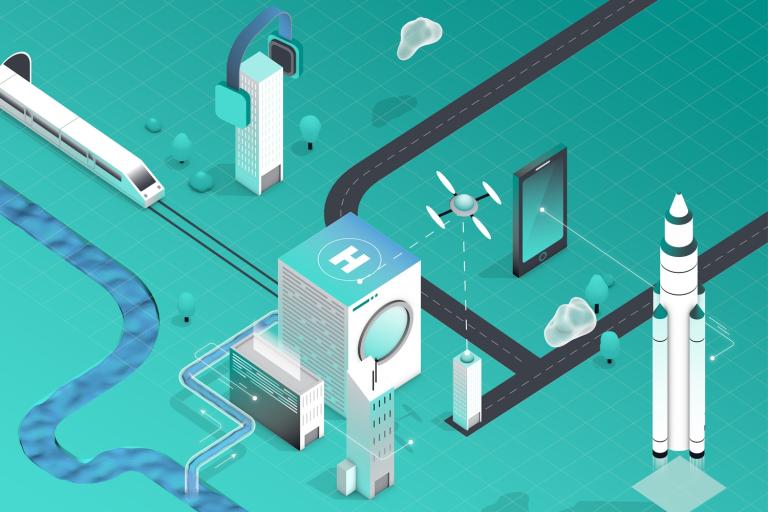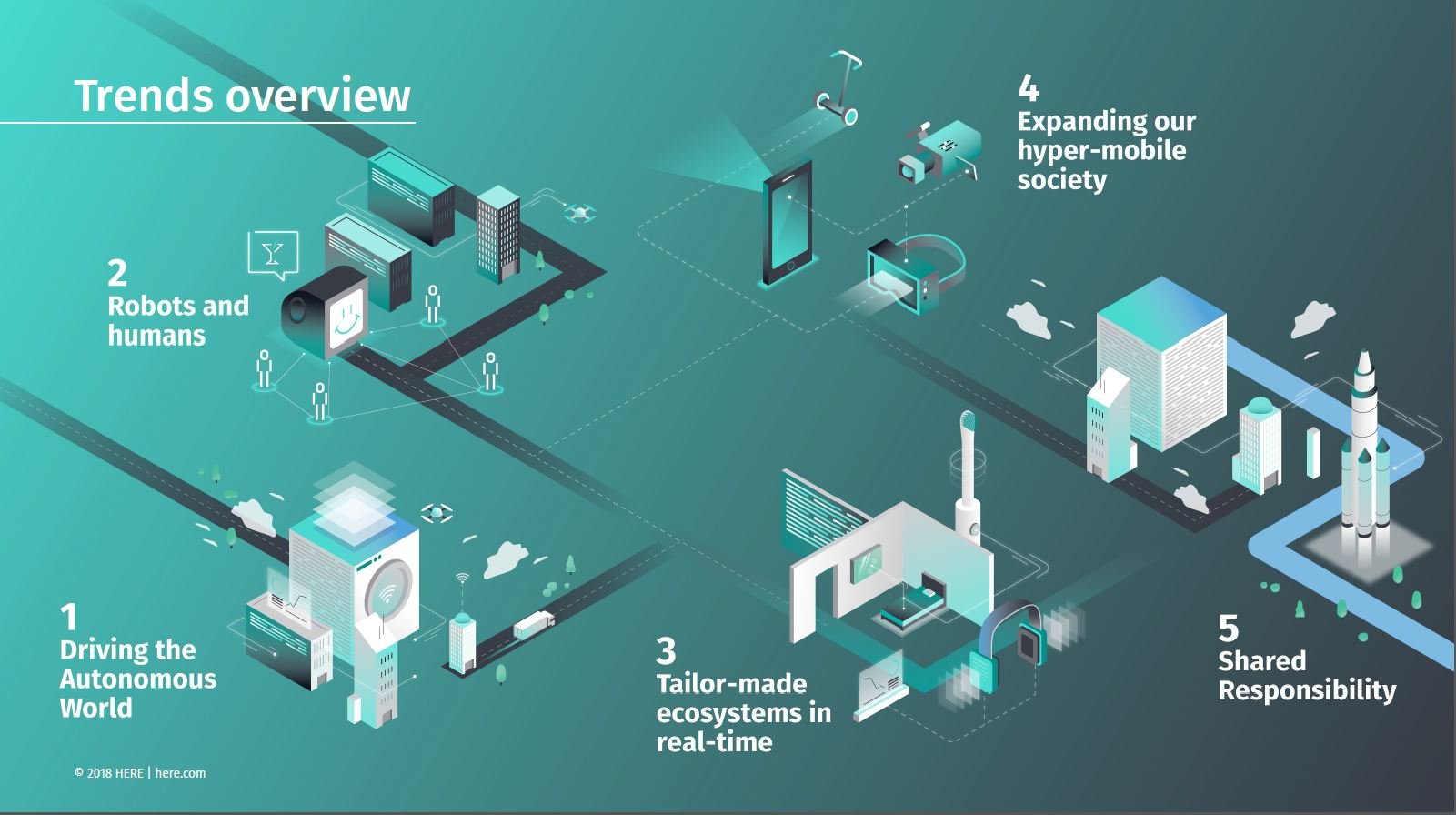Location Trends Report: Connected life in 2018 and beyond

Each year, our Trend and Innovation Research Team conducts an extensive study that aims to surface indicators of change in the way we live, travel and work.
The study is designed to define what those changes mean for our future; and inform how location intelligence can make a difference.
With a heavy focus on the technologies that are at work and at play in our daily lives, we’ve put together a report of the developments that will make our lives simpler.
Driving the Autonomous World
The number of digital-powered and connected technologies that have become a routine part of our day-to-day lives is growing. They are joining an increasingly autonomous system that is able to predict situations and events and to prescribe measures to manage or to prevent them. For example: having a connected washing machine that knows if you have enough detergent left is already pretty advanced. As cloud networking and machine learning is applied to historical models, your new washing machine already knows when you’re going to run out of detergent, and it acts accordingly so that you have an uninterrupted supply.
The autonomous world has promised to help us to solve problems that were previously beyond human capabilities, and do so in an imperceptible timeframe. To enhance human lives, these systems ask for responsibility to create solutions that go beyond efficiency and optimization to understand human aspirations.
Shared Responsibility
The world is our oyster, and everybody wants to take care of it. Various technologies empower individuals, companies and governments alike to either solve pressing issues, like developing a sustainable environment or to fulfill man's old dreams, like traveling to space. Acting by belief and values becomes an important selection criterion for everyone and this is impacting the traditional relationship between individuals, companies and governments.
Combining individuals, companies and governments that act in line with their values will empower us to solve environmental and societal issues – all parties involved must live up to their responsibilities to create and sustain a better world.
Tailor-made ecosystems in real-time
What we once called a “user profile” came from manually entered data that was provided by an individual signing up for a service or subscription. That manual data still has its place, but the value of a profile has been eclipsed by the ever-growing amount of personal data that individuals opt to share with the world.
That personal data includes physiological and behavioral traits made available by the increasing number of IoT products and services that individuals use every day. Consumer devices from headphones to toothbrushes, wearable tech like health trackers, smartphones, applications and services; all of these solutions capture data about individuals.
With the growing availability of this personal data, new services and solutions begin to form a subtle, always-aware ecosystem, which fine-tunes and tailors content and services to each and every individual, in real-time.
Robots and humans
While the always-on ecosystem is largely unseen, digital-driven constructs like drones and robots are highly visible. Those AI-driven devices are becoming more collaborative, and more commonly seen in the world around us.
To ensure a smooth interaction between humans and machines, a paradigm for interaction has to be created. That paradigm will drive how comfortable individuals feel using robotic services, and in turn, will drive favor in how consumers choose which services they subscribe to. Imagine, indeed, the day when an autonomous car service is favored because the AI is much more polite.
Artificial intelligence is set to analyze interpersonal relationships and human rituals in order to understand how to make people feel comfortable. The future of technology lies in how successfully it can address real human issues.
Expanding our hyper-mobile society
Developing our mobility is key – whether that’s traveling to see our families, or if reaching out to our business partners on another continent. Despite all advancements in technology, human connection and interaction remain key in maintaining meaningful connections.
Mobile technologies are enabling us to scan reality into virtual reality and create highly realistic representations of ourselves. We can then use those representations to interact effectively and personally with others across large expanses.
5K displays and mixed reality headsets are letting us connect with one another in virtual spaces. In industries like healthcare, these technologies empower patients, their families and caregivers to become full, active participants without being at the same location. Meanwhile, autonomous vehicle and mobile-enabling technologies are helping us travel physical distances more easily, as well as having goods and services delivered to us as part of an on-demand economy.
A hyper-mobile future is one which fosters meaningful connections by creating a more diverse, equal and interconnected society, with services and experiences made more accessible for everybody.
What’s next?
In the coming weeks, we’ll be sharing detailed breakdowns of each of the trends identified above, as well as our methodology of research and reporting. If you want to download the full report, get in touch with us.
Have your say
Sign up for our newsletter
Why sign up:
- Latest offers and discounts
- Tailored content delivered weekly
- Exclusive events
- One click to unsubscribe



